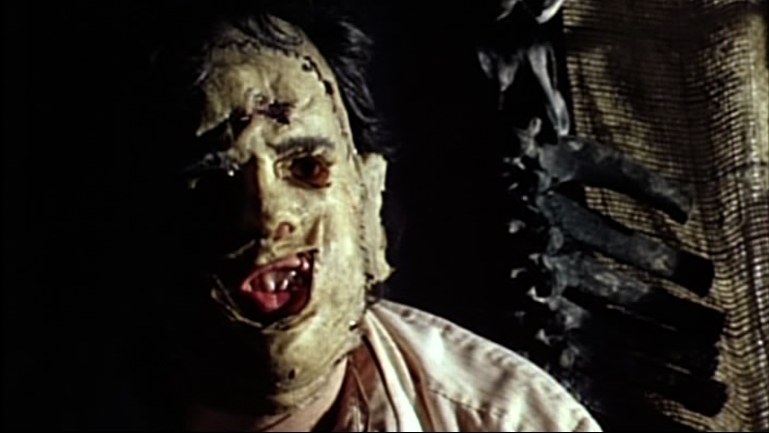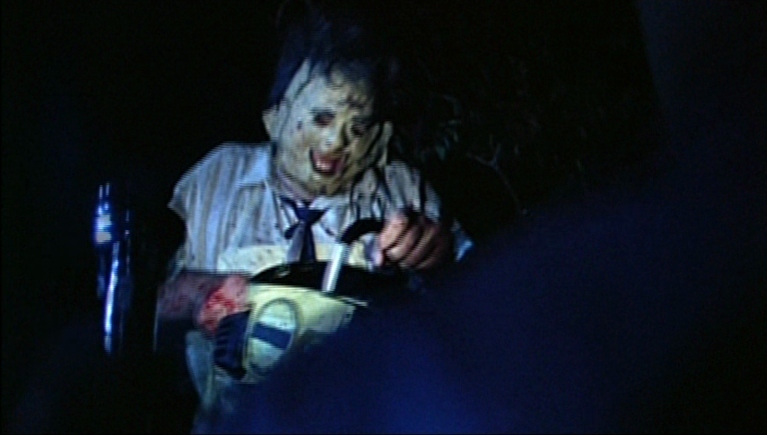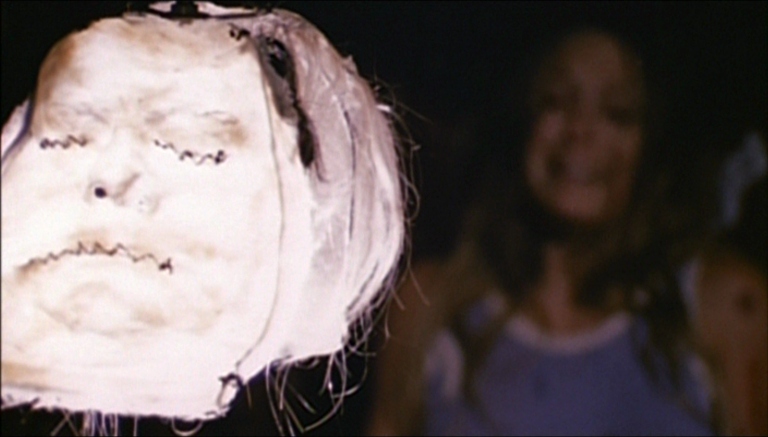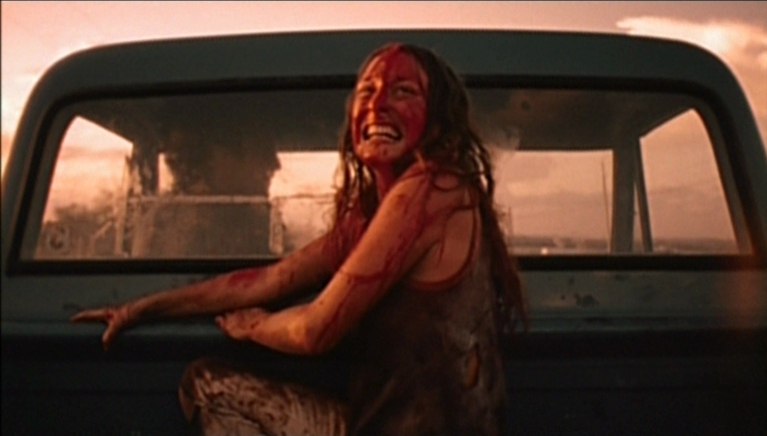
There are few films that claw their way into the collective subconscious quite like Tobe Hooper’s 1974 nightmare, The Texas Chain Saw Massacre.
Often misremembered as a gore-fest, its true horror lies not in what it explicitly shows, but in the raw, relentless psychological assault it inflicts. For the discerning mind exploring the darker corners of the psyche, this isn’t just a slasher; it’s a primal scream from the heart of American anxieties, a visceral deconstruction of sanity in the face of absolute, unreasoning evil.

The film opens with a grim, almost documentary-like voiceover, immediately disavowing the audience’s comfort. This isn’t entertainment; this is an account. Five young people, including the wheelchair-bound Franklin (Paul A. Partain) and his sister Sally (Marilyn Burns), are on a road trip, ostensibly to investigate grave desecrations. Their journey leads them deep into rural Texas, a landscape that quickly sheds its bucolic facade to reveal something ancient, desolate, and utterly hostile. This isn’t just a change of scenery; it’s a descent into an archaic, brutal realm where the rules of civilization no longer apply.
The immediate horror is introduced not by a monster, but by a profoundly unsettling human: the Hitchhiker (Edwin Neal). His erratic behavior, self-mutilation, and terrifying obsession with photography immediately signal that these are no mere country folk. He is the first crack in the veneer of normality, a chaotic herald of the primal nightmare awaiting them. His expulsion from the van by the horrified group is a futile attempt to expel the encroaching madness, an act that only serves to seal their doom.
The Sawyer family’s house is not just a domicile; it’s a monument to grotesque domesticity, a living, breathing slaughterhouse. Every detail—the furniture made of bones, the feather lamps, the chicken coops inside the home, the unspeakable stench implied by the characters’ reactions—is designed to overwhelm the senses and assault the mind. This isn’t just an external threat; it’s an environment engineered to systematically dismantle any sense of order or safety. The family itself—the Hitchhiker, the Cook (Jim Siedow), the ancient, desiccated Grandfather (John Dugan), and the terrifying, infantilized Leatherface (Gunnar Hansen)—represents a horrifying inversion of the nuclear family, a perverse unit bound by shared depravity and a cannibalistic existence.

Leatherface, the iconic figure, is a fascinating psychological construct. He is not a calculating serial killer but a childlike, mentally regressed enforcer. His masks, made of human skin, are not just disguises; they are shifting identities that reflect his roles within the family – the domestic ‘woman’ carving meat, the ‘provider’ with his apron, or the ‘monster’ hunting outside. He is terrifying precisely because he embodies an unthinking, primal force, acting out the twisted will of his “family” without malice, but with terrifying, animalistic efficiency. He is the ultimate embodiment of humanity stripped bare of all socialized restraint.
The film’s relentless focus on Sally’s torment is where its true psychoanalytic power lies. From the moment she witnesses her friends’ brutal demise, to her horrifying discovery of Pam on the meat hook, to the infamous dinner scene, Sally undergoes a complete psychological disintegration. She is not just running for her life; she is running from her sanity. The dinner scene is a masterpiece of sustained psychological torture, forcing Sally into a grotesque parody of familial bonding, a literal feast of human flesh, her screams ignored, her terror relished. Her hysterical laughter at the end, as she escapes in the back of a truck, is not a laugh of relief, but of a mind utterly shattered, beyond repair. She has truly “broken out of a window in hell.”

The Texas Chain Saw Massacre tapped into a profound societal unease of the early 1970s: the lingering trauma of Vietnam, the erosion of trust in authority, the breakdown of traditional family values, and anxieties about the working class left behind by modernization. The cannibalism of the Sawyer family can be interpreted as a brutal metaphor for “cannibalistic capitalism”—a system that consumes its own, turning people into mere commodities. The film’s “found footage” aesthetic, even before the term existed, lent it a shocking, raw realism that blurred the line between cinematic fiction and terrifying reality, deeply unsettling audiences who were already feeling disoriented by a rapidly changing world.
It is a horror film that strips away all pretense, all comfort, and all hope, leaving only the raw, screaming essence of fear. The Texas Chain Saw Massacre is a timeless nightmare because it taps into the fundamental human fear of being reduced to nothing more than meat, consumed by an indifferent, monstrous reality.





